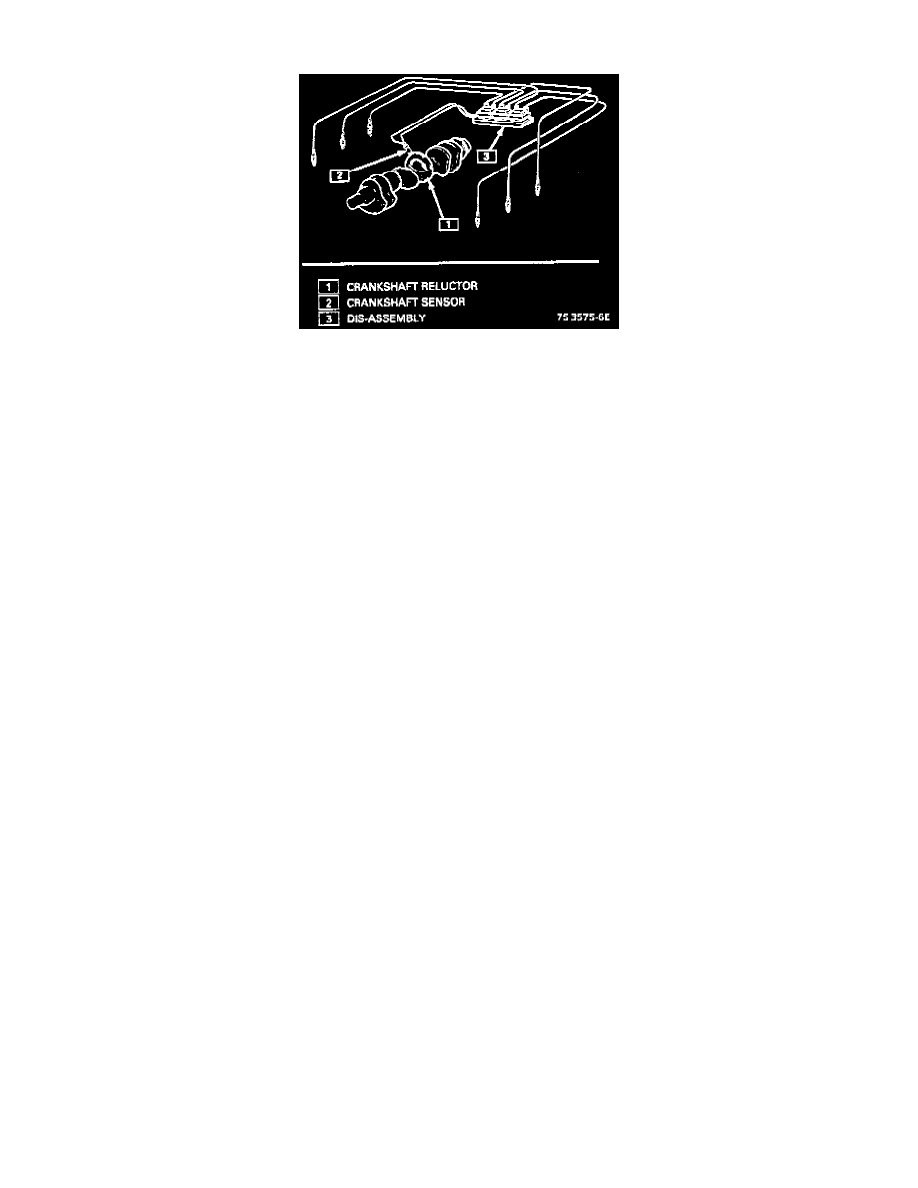6000 V6-173 2.8L (1988)

Crankshaft Position Sensor: Description and Operation
Sensor To Crankshaft Reluctor Relationship
PURPOSE
The crankshaft sensor provides a pulse signal which the Direct Ignition Module (DIS) Module uses to provide the correct spark timing. The DIS
module passes this signal onto the Electronic Control Module (ECM) which uses it as reference to calculate rpm and crankshaft position.
OPERATION
This system uses a magnetic crankshaft sensor, mounted remotely on the opposite side of the engine from the "DIS" module. This sensor protrudes
into the block, within approximately 0.050" of the crankshaft reluctor. The reluctor is a special wheel cast into the crankshaft with seven slots
machined into it, six of which are equally spaced (60° apart).
A seventh slot is spaced 1O° from one of the other slots and serves to generate a "sync-pulse." As the reluctor rotates as part of the crankshaft, the
slots change the magnetic field of the sensor, creating an induced voltage pulse.
Based on the crank sensor pulses, the "DIS" module sends reference signals to the ECM which are used to indicate crankshaft position and engine
speed. By comparing the time between pulses, the "DIS" module can recognize the pulse representing the seventh slot (sync-pulse) which starts the
calculation of ignition coil sequencing. The second crank pulse following the "sync pulse" signals the "DIS" module to fire the # 2/5 ignition coil,
the fourth crank pulse signals the module to fire the # 3/6 ignition coil and the sixth crank pulse signals the module to fire the # 1/4 ignition coil.
